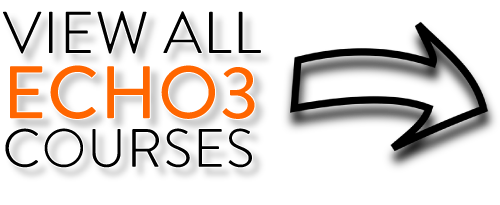Related Articles
- What is corporate manslaughter?
- Safety Management systems – large business
- Other General Laws around HSE
- HSE Enforcement Policy
- How to create an effective safety culture
Six Steps to Safety Management
The 6 steps we cover are;Step 1 – Nominate a Competent Person(s)
Step 2 – Identify Risks
Step 3 – Communicate Policies
Step 4 – Provide Appropriate Training
Step 5 – Monitor your Safety Management
Step 6 – Tweak and Improve
Step 1 – Nominate a competent person
Every business, regardless of size, must appoint a competent person to take responsibility for health and safety management. Competency requires knowledge therefore HSE training is essential. While accessing the Health & Safety Executive website may provide you with a wealth of useful tips and advice, only certified training will enable you to evidence this competency.One key benefit of accredited training is the HSE courses include an assessment. So your business can show that the person has demonstrated sufficient knowledge to undertake the role safely.For small, low risk businesses our online Health & Safety for Managers course is a great starting point. It not only provides the information you need but also provides accredited certification in only 45 minutes.Larger businesses will want to consider the next level course IOSH Managing Safety course or the NEBOSH General Certificate.Step 2 – Identify Risks
 This is known as risk assessment and there are legal obligations for businesses of any size so its vital to understand what you need to do.Once risks have been identified, likely the main ones in low-risk activities such as office work, will be Fire, First Aid, Occupational health and Hygiene (Display Screen Equipment).For higher risk activities such as welding or scaffolding, risk assessments are more involved. If your business exposes staff to Working at height, Asbestos, Hazardous Substances or Food Preparation specific control measures need to be put in place.Ideally control measures are designed in such a way as to ensure staff are not be exposed to hazards.However, usually this is not possible to remove hazards altogether, hence the logic behind our hazard awareness courses. Each one provides details of the specific legislation and best practice so staff know how to keep themselves and others safe.2 specific hazards every company must address are;FIRERegulations are different in Scotland than England and Wales but, wherever you are, a Fire Risk Assessment needs to be undertaken by every employer. For a small business like a cafe cookers and gas canisters present a risk. Consider where exits will be and have a plan in the event of a fire. Train staff to tackle certain fires or evacuate immediately. Once your assessment is complete, you need to minimise the identified risks. For more info see our RoSPA accredited Fire Safety course.FIRST AIDEvery employer must legally ensure that staff, customers and contractors receive immediate attention should they require first aid. This means having a first aid kit to hand and someone appointed to take charge of delivering first aid. You may also be required to ensure there are trained first aiders amongst your staff. Our online courses First Aid and CPR are good options for lower risk businesses.
This is known as risk assessment and there are legal obligations for businesses of any size so its vital to understand what you need to do.Once risks have been identified, likely the main ones in low-risk activities such as office work, will be Fire, First Aid, Occupational health and Hygiene (Display Screen Equipment).For higher risk activities such as welding or scaffolding, risk assessments are more involved. If your business exposes staff to Working at height, Asbestos, Hazardous Substances or Food Preparation specific control measures need to be put in place.Ideally control measures are designed in such a way as to ensure staff are not be exposed to hazards.However, usually this is not possible to remove hazards altogether, hence the logic behind our hazard awareness courses. Each one provides details of the specific legislation and best practice so staff know how to keep themselves and others safe.2 specific hazards every company must address are;FIRERegulations are different in Scotland than England and Wales but, wherever you are, a Fire Risk Assessment needs to be undertaken by every employer. For a small business like a cafe cookers and gas canisters present a risk. Consider where exits will be and have a plan in the event of a fire. Train staff to tackle certain fires or evacuate immediately. Once your assessment is complete, you need to minimise the identified risks. For more info see our RoSPA accredited Fire Safety course.FIRST AIDEvery employer must legally ensure that staff, customers and contractors receive immediate attention should they require first aid. This means having a first aid kit to hand and someone appointed to take charge of delivering first aid. You may also be required to ensure there are trained first aiders amongst your staff. Our online courses First Aid and CPR are good options for lower risk businesses.Step 3 – Communicate Policies
Policies are operational procedures or management systems (details) for your business. When proceeding with your policies, remember your staff need to be on board. The importance of understanding this Human Element within business has given rise to a multi-billion pound and industry.On the surface, having adequate technology and operating systems in place may seem enough to reduce risk. Our Introduction to BIM outlines a tool to help create safer buildings. In the oil and gas industry millions are spent designing safety glasses for workers that are stronger, more ergonomic and comfortable.All of these design technologies require staff cooperation. Workers need to wear these glasses all the time and follow the safety protocol. Health and Safety communication with staff is a legal obligation. The Health and Safety regulations 1996 (external link) outlines in more detail what needs to be communicated. Best practice is a constant two-way communication of ideas to improve safety, monitoring and refinement. Our Communication Skills and Delegation Skills courses are designed to provide staff with the skills to create a workforce that works with your organisational and HSE goals.Once your staff have been consulted, it’s time to write your policy. This doesn’t take long and the Health and Safety Executive has templates and suggestions for Policy Structures. For small businesses you will find information on our Health and Safety for Managers course. Larger organisations NEBOSH General Certificate course provides formal accreditation on what policies are right for your business. .Implementing policies will require some investment. For example, if everyone requires a high-vis jacket, the employer is required to provide jackets not only for staff and contractors but also for any visitors. Make sure you have the financial investment for reasonable provision.All policies need to be monitored. You need to know if policies are being followed and if not, why not. In your policy you should note who is responsible for implementing and monitoring a specific policy. For example in the transport industry a tachograph is to monitor driving information. The data provides transport managers with knowledge about their drivers’ compliance with speed limits, hours etc. This way companies can control any deviations through training (or interventions). Without a monitoring mechanism it would be impossible to know where training and system refinements are required.Step 4 – Provide Appropriate Training
Investment in safety management training can increase staff motivation and productivity. This can lead to greater customer satisfaction and increased profits. As already noted, the level of investment is your decision. This section is about what level of training is morally appropriate and legally compliant in order to reduce risk to staff, contractors and customers..Training must cover policies (or measures), hazards and using work equipment safely.Company policy must be uniform for all staff. Hazards tend to relate to a specific task so a training matrix is a useful document.Consider the needs of new employees, contractors and those who take on additional responsibility (First Aiders for example)Training is a two-way process. Listen to suggestions from staff regarding improvements and implement when appropriate.Companies are either proactive or reactive with training. Proactive organisations tend to be the ones gaining commercial advantage and have and effective safety culture. Reactive companies are the ones doing just enough to get by not until its not and then in the end often spend more money in rectification. Remember the proverb ‘For the Want of a Nail’?Have a method statement in place detailing how work can be carried out the safest way. Training staff on hazard awareness and avoidance fosters proactive and cooperative behaviour. Training by job, Training by Hazard, Training by IndustryNumber one: In our training we discuss the underpinning theory more than other eLearning companies. We believe candidates have greater success when they have a theoretical foundation which provides deeper understanding and insight to the skills they are developing. Hence the ‘education’ in our title. In effect, we use underpinning theory to support enhanced adoption of learning objectives longer term. For example, in the Manual Handling training candidates learn about the muscle system rather than just how to lift correctly.Number two: Every course provides evidence of competence through our digitally stored certificates. Should an incident occur you can see exactly who has done what, when and how they performed. The assessment element of our training gives you the security that your employees are achieving the learning objectives. This also acts as evidence that you are meeting the legal requirements.You might ask yourself what type of training suits your business needs best…online or face to face? At echo3 education we can support you in finding the right courses that meet your needs.Q Is it practicable to train staff to boil a kettle correctly?A If you make 4 or 5 cups of coffee a day then the risk of scalding is relatively high. But for someone who has been doing this for years and has never scalded themselves then you can assume the person is competent and doesn’t require any training.Q Is it reasonable to ask staff to climb a ladder to change a light bulb?A The hazard is lower – a fall resulting in a sprained ankle is the worst outcome but the chance of this happening is low. So it would be going too far to implement a trainer to spend a day teaching someone this skill but well worth observing someone every three years to check they know stepladder procedures. So training is a subjective matter and falls into two categories: proactive and reactive.Step 5 – Monitor your Safety Management
Once your HSE processes are in place and staff have been fully trained to follow them it’s important to monitor them. Businesses evolve and change constantly so it’s vital to remember to monitor what’s going on internally and externally. HSE can have an impact on other systems or processes. For example, recently I visited an HSE manager who had a contractor fall through a roof. The contractor hadn’t been monitored by a competent employee as they normally should have been. On this occasion the competent person had undertaken additional responsibility and was providing training awareness to other staff. So in trying to address one risk, another was created, which led to an incident and ultimately a fine for not protecting contractors.Key areas you can monitor;- Accidents (Lag) Some accidents have a legal obligation to be reported
- Near misses (Lead) Help inform corrective actions. Many organisations fail to report near misses accurately due to poor staff training on the reasons for near miss reporting
- Listen to staff (Lead) An important legal requirement and often missed. Your staff often know best how to reduce risks further.
- Safety audits and inspections (both) Keep track of the number of audits and inspections you’re undertaking
- Corrective Actions (Lead) Record the refinements made to your HSE management system. This will help you resolve similar issues in the future. And if communicated it will provide employees with an understanding of their new accountabilities.
- Employee training (lead) echo3education provide free monitoring and reporting of your staff training to make your life easier. (A key part of accident reports is to understand what training your staff have achieved.)
- Health of your workforce (Lead) A growing issue in many businesses and for legislators. Lifestyles are becoming increasingly sedentary, particularly for those who work at desks. Help your staff be healthy and you may have less sick days.
- Carbon footprint (Lag) Another growing area for society as a whole. Effective environmental management may have promotional benefits.
- Spend (Lead) Ensure you’re getting the best value for money from all parts of your HSE system. If you’re already spending a lot on training and storing records then we can help. We can offer better online training that’s more efficient lower in cost and we can store your records for free. Check out our Quick Quote page to get an idea.
Step 6 – Tweak and improve
You take your observations, or KPIs and actions to improve your performance. Steve Covey in his book ‘7 Habits’ nicely refers to this step as ‘Sharpening the Saw’.As mentioned, improvements should focus on lowering exposure to hazards or the risk of those hazards causing an incident. But they could also be cost improvements, for example the same training at a lower expense. Obviously this will free up your budget for other initiatives.The KPIs detailed in Step 5 will help you focus your time and resources.Now you have everything in place you just need to keep the Monitor and Control cycle going.I hope you have found this article useful. Please get in touch if you have any thoughts or post below. info@echo-3.co.ukTo summarise:Step 1 – Nominate a Competent personStep 2 – Identify RisksStep 3 – Outline PoliciesStep 4 – TrainingStep 5 – MonitorStep 6 – Control
Please contact us for more information from basic training to full blown management systems audit. At echo3education we have a wealth of expertise to support you in making the right decisions for your team. You don’t have to reinvent the wheel to implement an efficient and effective safety management system.
ARTICLE ENDS








